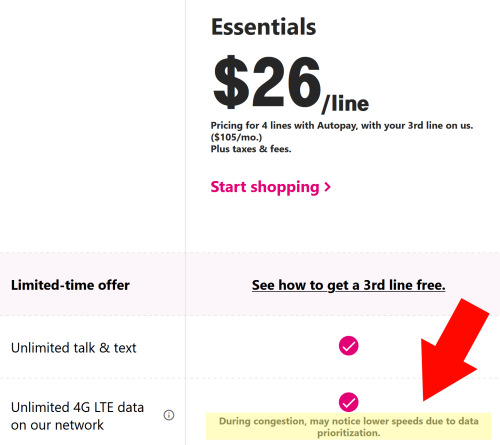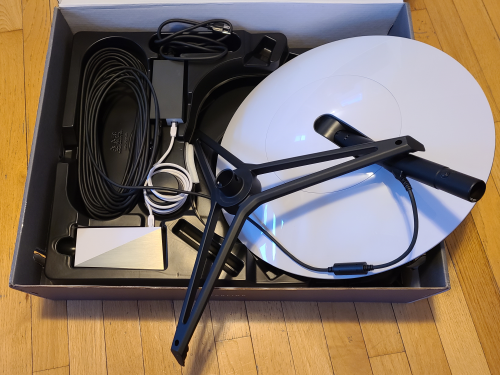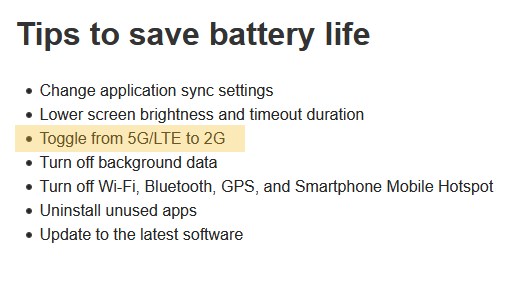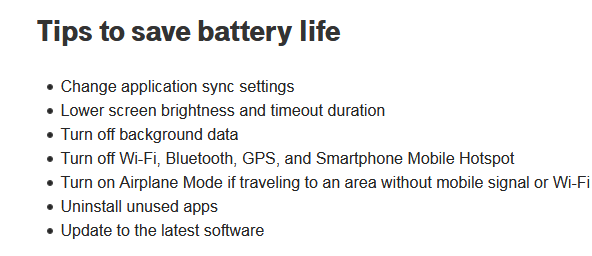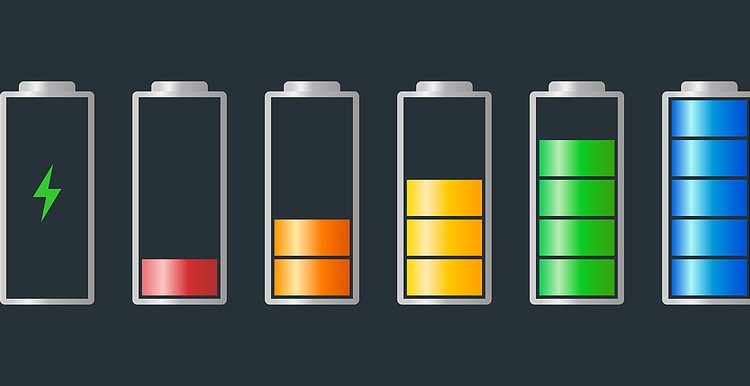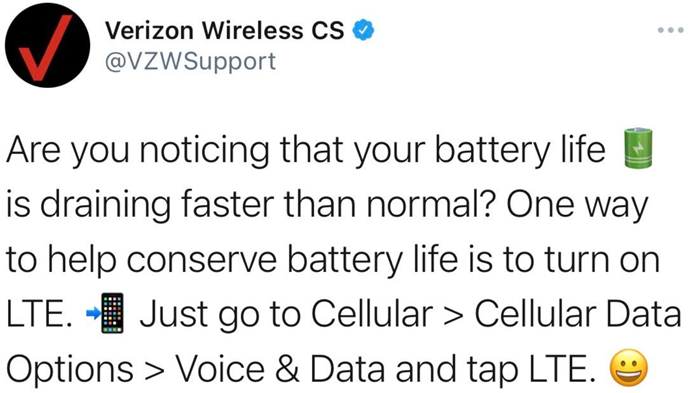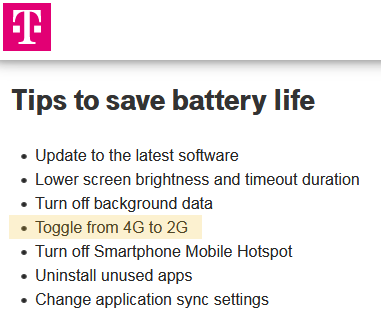Boost Mobile has been offering unlimited plans that include 35GB of regular, full-speed data each month. Subscribers that exceed 35GB of use are throttled to 2G speeds.
I’ve argued that plans where customers can be throttled to snails-pace speeds shouldn’t be labeled “unlimited.” It seems the National Advertising Division (NAD), a self-regulatory body, agrees. The organization just ruled against Boost in a dispute initiated by AT&T. I strongly agree with this excerpt:
Boost’s Marketing
Here’s a screenshot of how the plans appeared on Boost’s website:
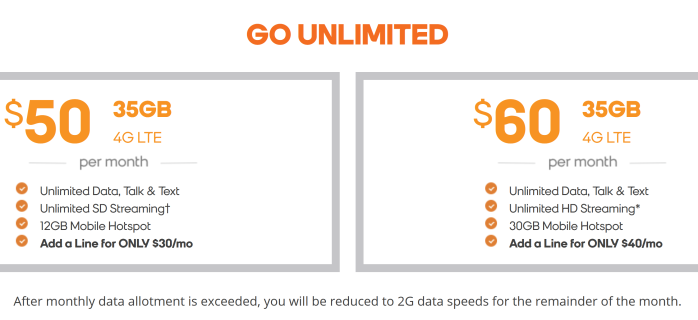
The Good
Boost gets a few points of transparency right:
- It’s clear only 35GB of LTE data is included.
- The disclaimer text about throttling to 2G speeds is prominent.
The Bad
- Boost doesn’t say what 2G speeds means.
- The bits about unlimited streaming are utter bullshit.
You can’t stream normal video at 2G speeds (128kbps). You absolutely can’t stream in HD at 128kbps.
Other “Unlimited” Plans
Boost kind of tried to make reasonable discloses about limitations on its unlimited plans. The company’s marketing of it’s “unlimited” plans is far from the most egregious example in the industry. Several other carriers also offer “unlimited” plans with similar throttling policies, including some decent-sized carriers like Mint and Total Wireless. It’ll be interesting to see if the NAD decision leads any companies besides Boost to change their marketing.1


